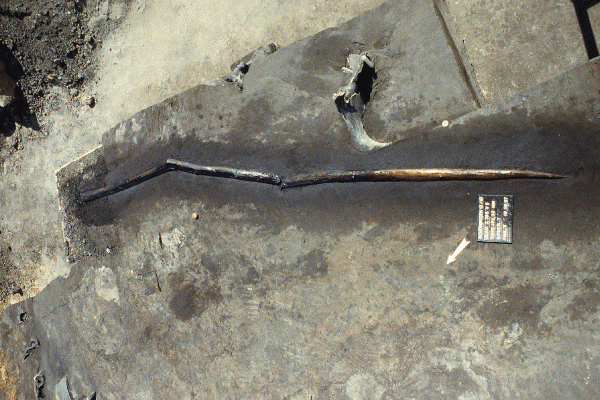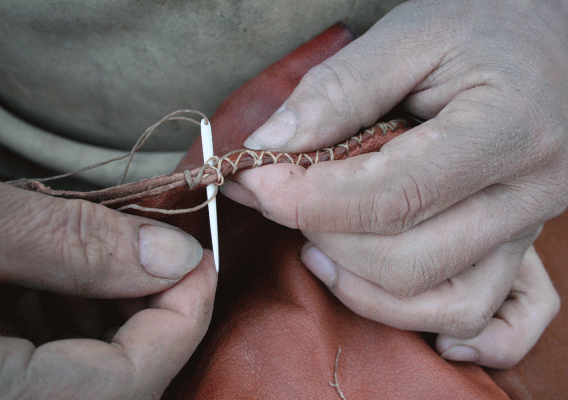Featured
Uniquely Human: Understanding Our Cultural Evolution
Humans are not unique as a species in our ability to use tools or form complex social groups. So what happened in the evolution of Homo sapiens that made our species stand out in comparison to other hominids? Several theories point to our unique ability to develop culture via social learning—the capacity to teach and learn from others—as an evolutionary turning point in human history.
Gene-Culture Coevolution
When Marcus Feldman started his PhD in biology at Stanford in 1971, there was a debate raging over the publications of Arthur Jensen and William Shockley, scientists who contended that differences in IQ measurements between racial groups were almost entirely based on genetics.

Feldman, now a professor of biology at Stanford University, described how this racist debate over the mechanisms of IQ heritability led him to become interested in seeing whether cultural transmission might also play a role in shaping the characteristics of human populations. He and his longtime collaborator Luigi Luca Cavalli-Sforza, a population geneticist at the Stanford University School of Medicine, began to investigate whether behavioral processes like social learning might exert as great an influence on human evolution as genetics.
“The two of us sat down to try to see whether cultural transmission, as opposed to genetic transmission, could explain our high heritability,” Feldman said in an Integrative Science Symposium at the 2019 International Convention of Psychological Science (ICPS) in Paris.
Feldman and Cavalli-Sforza, described as founders of the field of cultural evolutionary research and gene-culture coevolution, began applying quantitative mathematical models from the field of population genetics to understand how a combination of genetics, culture, and behavior contributes to shaping human evolution.
In 1981, the two published a landmark book, Cultural Transmission and Evolution: A Quantitative Approach, paving the way for the new field of quantitative cultural evolutionary theory. Their book laid out a framework for how the transmission of nongenetic, socially learned traits across individuals and groups can impact human diversity in ways similar to genetic transmission.
In the 1990s, Cavalli-Sforza started the Human Genome Diversity Project, a collaborative international project designed to study the richness of human genetic diversity. As part of this project, he, Feldman, and dozens of collaborators compiled the Human Genome Diversity Cell Line Panel, a resource of uniquely diverse genetic information collected from more than 1,000 individuals across 52 global populations representing most of the world’s major geographic regions.
Although Feldman regrets that the team was not able to collect a more complete and representative panel of samples, the project has provided an unprecedented opportunity to study human evolution and genetic diversity.
The analyses resulting from this body of work have provided an enormous number of cross-disciplinary insights into fields ranging from archaeology and anthropology to epidemiology and linguistics.
In one example of the impact of a cultural phenomenon on population genetics, Feldman described how marriage customs and taboos can influence the frequency of genetic diseases. When the cultural practice of marriage between blood relations is more common, very rare alleles associated with genetic diseases became more frequent within a population, Feldman observed.
“That is a cultural choice [that] dictates the pattern of the DNA variation,” Feldman explained.
Since the publication of Feldman’s work on the Human Genome Diversity Cell Line Panel in Science in 2002, these types of DNA studies have become increasingly common. However, Feldman cautions researchers to be wary of how DNA variation can be misused.
“We now have a very heavy hammer, which is the ability to find DNA variation everywhere we look—in humans in particular—and associate it with phenotypes. And it’s being done all the time, 20 or 30 articles a day,” Feldman warned. “I think it’s necessary for psychologists, as well as other social scientists, to look carefully and critically at the inferences that are being made about complex human traits, especially behaviors.”

Excavating Culture
Although we have no remnants of behavioral data from our early human ancestors, we do have archeological artifacts dating back as far as 3.3 million years. Cognitive archaeology researchers like Miriam Haidle use these physical objects to trace the cognitive and cultural evolution of humans and other hominids. Haidle is the scientific coordinator of the Role of Culture in Early Expansions of Humans project at the Heidelberg Academy of Sciences and Humanities at Senckenberg Research Institute in Frankfurt, Germany.
When closely studied, stone tools and other material artifacts can provide researchers with a rich window into the cognitive capabilities, as well as the cultural practices, of our prehistoric ancestors. For example, the ability to shape stones through flaking, or to turn a small tree into a tool for hunting, can reveal a whole scope of cognitive processes, such as causal reasoning.
In a 2015 paper published in the Journal of Anthropological Science, Haidle and a diverse group of coauthors ranging from archaeologists to psychological scientists described how culture emerges through the development of three dimensions.
To start, there is a necessary biological dimension, including how biological factors such as genes, anatomy, and physiology both enable and restrict behavior. Human hands, for example, allow different forms of cultural development than the flippers of a dolphin or the wings of a bat. There is also a dimension of individual development that encompasses a given individual’s capacity, skills, and experiences. Finally, there is the historical-social dimension, which is particularly important for the development of culture. This dimension includes knowledge and skills that are shared socially.
Although there is evidence that some other animal species are capable of rudimentary aspects of culture, such as using basic tools, the historical-social dimension is uniquely well developed in humans. In fact, at some point in our evolutionary history, the biological dimensions—our genetically heritable traits—became less important, and the historical-social dimension increased dramatically in importance, Haidle explained at the ICPS symposium.
“There is an increase of the social and material engagement, and this is very important because you cannot learn everything on your own,” she said.
The production of clothing is an example of the importance of social learning in cultural expansion. Making the simplest clothing, just a piece of leather wrapped around the body, requires only a few tools to scrape, soften, and cut the hide. Even in this simple setting, raw material procurement, tool production, and application require various skills and knowledge that have to be learned and maintained. Producing more complex clothing requires not only more steps—making holes in the hide, tanning the hide, and threading pieces of the hide together—but also more specialized tools, combinations of practices, and thus knowledge and skills.
Tailored clothing sewn with eyed needles has existed for at least 30,000 years, representing further advances in materials and tools, along with practices to acquire and get trained in using them. The development of such increasingly complex performances is interdependent with the development of transmittance capacities of knowledge and skills, Haidle said. In cultural species, individuals do not invent behaviors over and over again; information is shared within and between groups and passed on to new generations. And “in humans, the intensification of social interactions and the expansion of a socially formed physical environment resulted in new transfer trajectories and the unfolding of new performances.”
Self-Conscious Learners
Henrike Moll, an associate professor of psychology at the University of Southern California, studies the cultural transmission of knowledge: How do we pass information from one person to another and from one generation to the next?
Children are actually self-conscious learners, rather than blank slates or passive sponges that simply absorb whatever information happens to be present in their environment, Moll argues.
“I believe that we have good evidence to think that children understand their need to learn. You can observe this very early on in children when they show so-called social referencing,” she said at ICPS. “They look up at other people in order to better understand what they should be doing in an ambiguous or ambivalent situation.”
Although other animals are capable of social learning, humans are uniquely adept at this skill. Part of Moll’s current research examines which mechanisms make human social learning so successful.
“We believe that there are different kinds of social learning mechanisms that are unique, and one of the most fascinating ones is the case of teaching,” she explained.
In a paper published in the Review of Philosophy and Psychology in 2018, Moll described a series of experiments that demonstrated how children’s problem-solving abilities benefit from teaching far more than they benefit from simply observing someone else solve a similar problem.
When asked to get a peanut out of a tall thin plastic tube using nothing but water, almost all 4-year-olds failed to realize they could use the water as a tool. When shown a video demonstrating puppets completing a similar task, children still largely failed to improve their problem-solving. However, when the same video was shown before the task with a teaching framing (“Look, I want to show you something!”), most children succeeded.
Not only do children seek out opportunities for teaching, but they also seem to understand that teaching serves to spread knowledge of a certain kind—namely, general knowledge.
In a series of experiments that are currently under review, Moll and colleagues found that even 4-year-olds have an innate understanding of the value of teaching and how to choose information most conducive to teaching others.
In the study, children were initially taught some new facts about an animal. The facts always included one generic fact that applied to the entire species (“Hummingbirds can fly backward”) and one episodic fact specific to an individual animal (“This hummingbird is flying backward”).
When children were asked to teach what they’d learned about animals to a pretend classroom, Moll and colleagues observed a pattern: The children consistently recounted generic rather than episodic information.
They seemed to inherently understand that conveying generic facts, which everyone can benefit from, is a key component of teaching. Episodic facts, on the other hand, tend to concern only specific people or situations.
Moll and her team of researchers think that this is because children understand that the goal of teaching is to acquire—and possibly further propagate—knowledge that is general and objective.
The Epidemiology of Representations
APS Fellow Dan Sperber, a social and cognitive scientist at the Institut Jean Nicod in Paris, has developed several influential theories that draw from his interdisciplinary background in anthropology, linguistics, philosophy, and psychology.
In his ICPS presentation, Sperber used the flow of water in a river as a metaphor for understanding the transmission of culture and information. In such a flow, patterns emerge that are fairly stable even though the water is continuously changing.
Likewise, most discernable patterns in the flow of cultural information are highly local and transient, yet some are widespread and stable over time, Sperber explained.
Ultimately, he said, culture emerges from microscale interactions between individuals—either dyads or just a few people living in a certain place. But sometimes these local, transient interactions lead to a very long and stable chain of transmission that can influence entire populations.
“Culture is not a thing nor a collection or system of things,” Sperber said. “It is a property that mental representations, behaviors, and artifacts possess to a variable degree.”
Sperber has developed a framework, the epidemiology of representations, to describe the distribution and flow of mental representations within populations. Like an infectious disease, the macro-level phenomena of culture are ultimately spread through the day-to-day interactions of individuals.
And, like the vectors of an epidemic, the mental representations that make up culture can mutate and shift over the course of person-to-person transmission.
“In the environment, the behavior or artifacts or objects that help convey information undergo lots of processes which may modify the information,” Sperber said.
However, these mutations are not random. He argues that the stability of cultural phenomena is due to a tendency of these mental representations to gravitate to “cultural attractors.” As mental representations are transmitted between individuals, they are not exactly copied or reproduced. Instead, they are transformed by the cognitive functions of each individual processing and reconstructing the information.
“Take the example of your friend cooking a wonderful apple pie,” Sperber explained. “Your goal is not to reproduce the exact movements and so on, or even the exact apple pie. Your goal is to help yourself produce a better apple pie.”
Humans are constantly reconstructing the information we’re exposed to, selecting what is relevant or generalizable from the original representation, and attempting to improve on it.
“You’re going to extract whatever, if anything, is relevant to you as you interpret it on the basis of your own interests and ideas,” Sperber noted. “And that’s what communication does quite systematically.”
In order to explain culture from an evolutionary perspective, we must also have adequately complex representations of human psychology and cognition.
References
Haidle, M. N., Bolus, M., & Collard, M. (2015). The nature of culture: An eighth-grade model for the evolution and expansion of cultural capacities in hominins and other animals. Journal of Anthropological Sciences, 93, 43–70.
https://doi.org/10.4436/JASS.93011
Moll, H. (2018). The transformative cultural intelligence hypothesis: Evidence from young children’s problem-solving. Review of Philosophy and Psychology, 9(1), 161–175. https://doi.org/10.1007/s13164-017-0342-7
Rosenberg, N. A., Pritchard, J. K., Weber, J. L., Cann, H. M., Kidd, K. K., Zhivotovsky, L. A., & Feldman, M. W. (2002). Genetic structure of human populations. Science, 298(5602), 2381–2385.
https://doi.org/10.1126/science.1078311
Sperber, D. (1985). Anthropology and psychology: Towards an epidemiology of representations. Man, 20(1), 73–89. https://doi.org/10.2307/2802222





APS regularly opens certain online articles for discussion on our website. Effective February 2021, you must be a logged-in APS member to post comments. By posting a comment, you agree to our Community Guidelines and the display of your profile information, including your name and affiliation. Any opinions, findings, conclusions, or recommendations present in article comments are those of the writers and do not necessarily reflect the views of APS or the article’s author. For more information, please see our Community Guidelines.
Please login with your APS account to comment.